The following few
graphs and pics are meant to give a little advise
regarding driver measurements. How is the microphone
going to be mounted and what about the tweeter?
Does flush mounting
matter.
First of all:
The microphone:
I cannot enough recommend reading the
articles written by John Atkinson at Stereophile:
http://www.stereophile.com/features/99
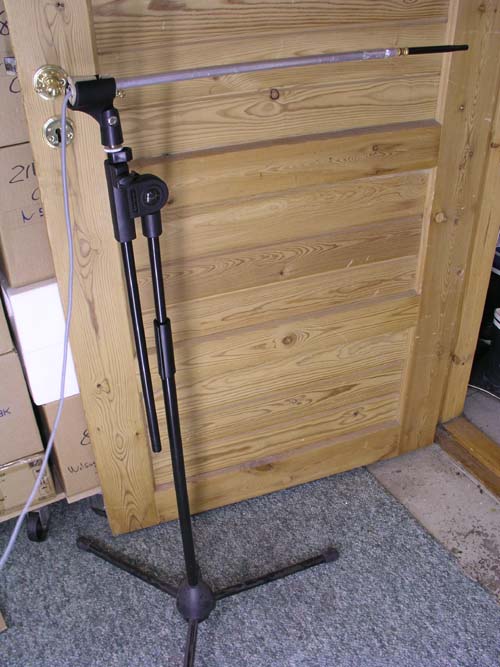
My
microphone placed at the end of a 55 cm long rod. You
simply need to do what's shown here above and below:
Place the mic at the end of a long rod. 0.5 meter will
usually do for 1 meter measurements. If you do measuments
at 1.5 meter distance, you need a 0.75 meter rod.

Correct microphone set-up.

From this you will have severe reflections from the mic
grip.
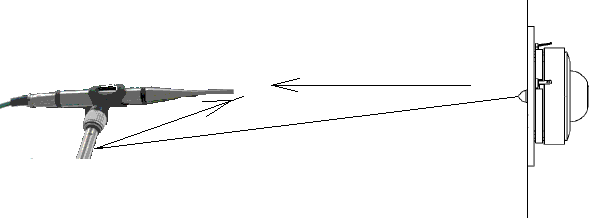
The problem is this. The soundwave from the speaker will
hit the microphone grip and bounce back to the microphone
capsule.
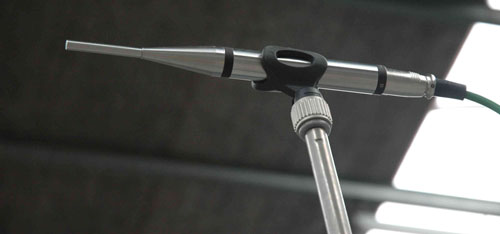
Found
on the web: This may be good for room measurements, but
not for speakers.
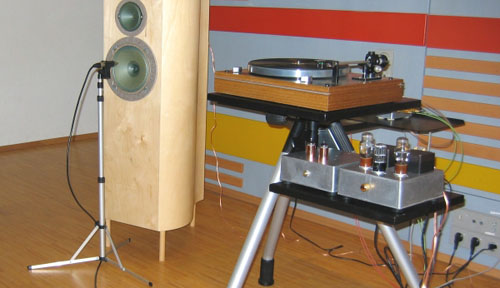
From
the web: This definitely doesn't work.
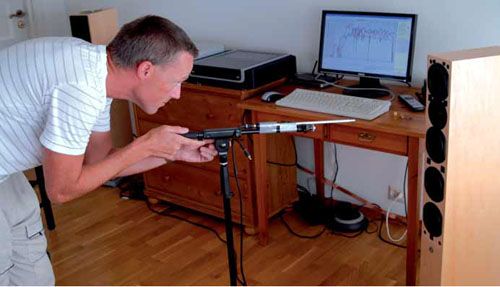
Someone sent me this. Won't work either.
The good question is how smooth the rod +
mic has to be not to reflect soundwaves back to the
microphone capsule. Here's an example of how little it
takes:
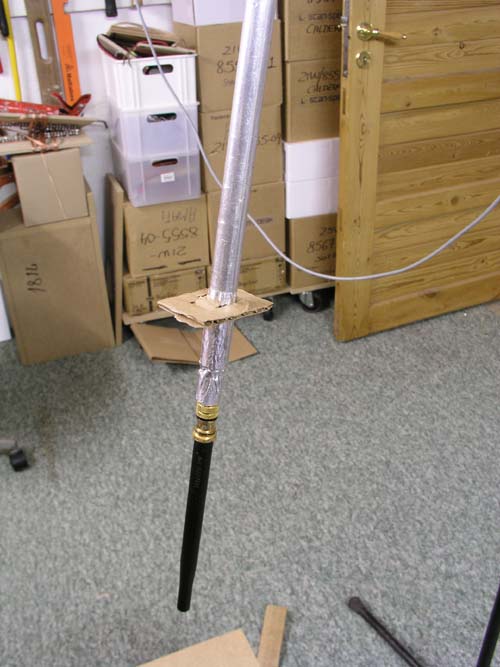
I've here placed a small piece of cardboard on the
microphone rod. This is what it does:
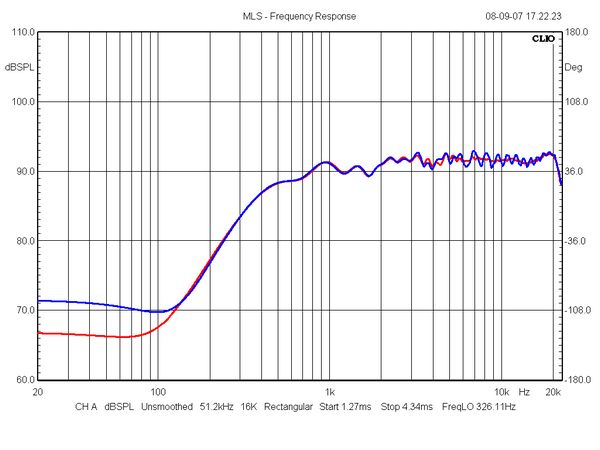
Blue: Cardboard placed 12 cm from microphone capsule.
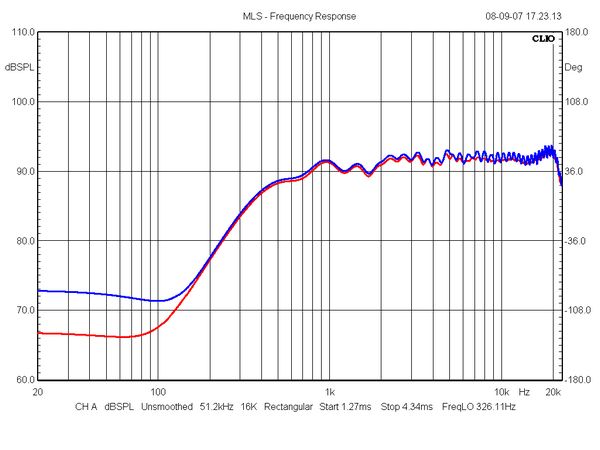
Blue: Cardboard placed 20 cm from microphone capsule.
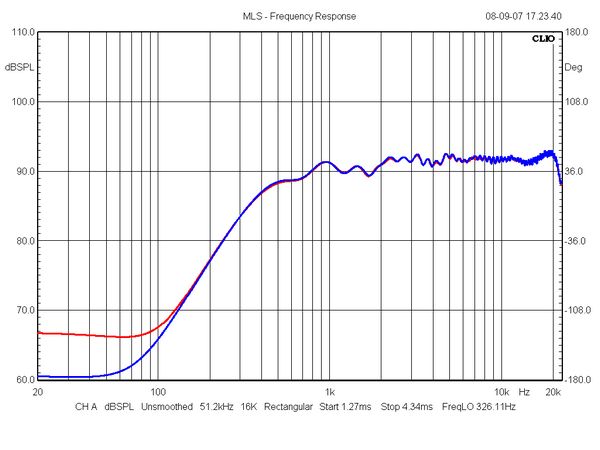
Blue: Cardboard placed 30 cm from microphone capsule.
As can be seen this tiny reflector
seriously compromises the tweeter performance.
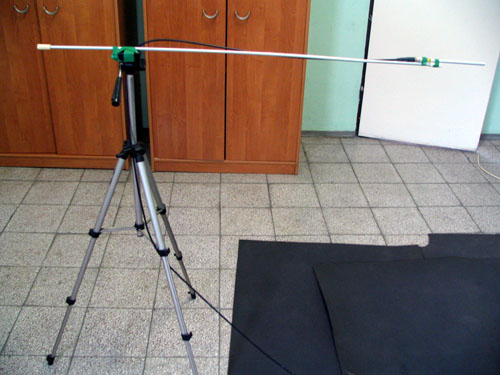
Someone sent me this picture. Looks OK, but the tip of
the long rod is a potential problem. I've tried adding a
second 12 mm rod to my set-up and didn't record any
disturbance. But take care. We can't fool acoustics.
Vifa XT25TG measurements
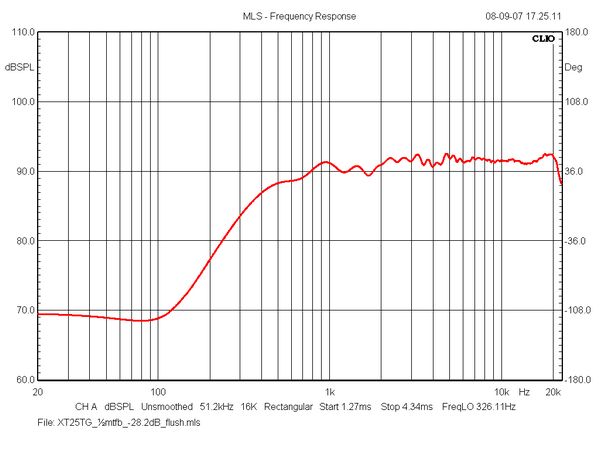
Above
the Vifa XT25TG tweeter flush-mounted on a 40 x 50 cm
baffle, a little off-set. Usually this tweeter has a
smooth response from 1 kHz all the way to 20 kHz. And
this reading is no exception. Measurement taken at ½
metre distance with 3.07 ms window as seen on the impulse
response below.
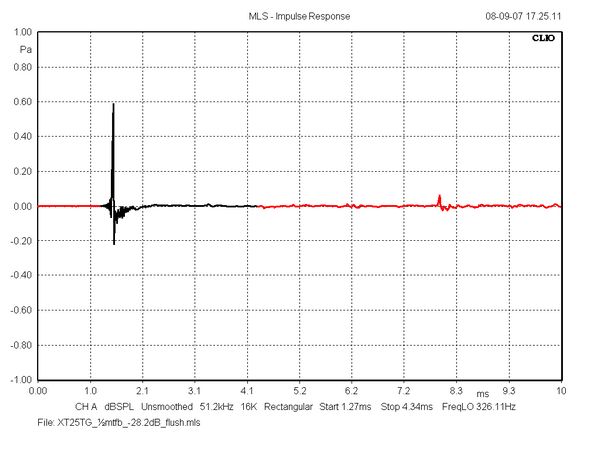
Impulse
response.
Flush mounting of tweeter(s)
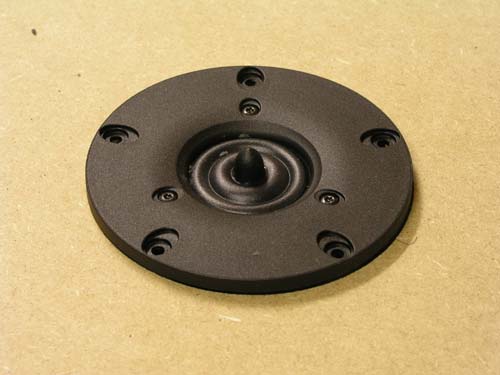
Above is seen what we should not do. No
flush mounting of the tweeter. Just cutting a hole for
the magnet leaves a 4-5 mm step from the tweeter face
plate to the baffle plane. The result is seen below.
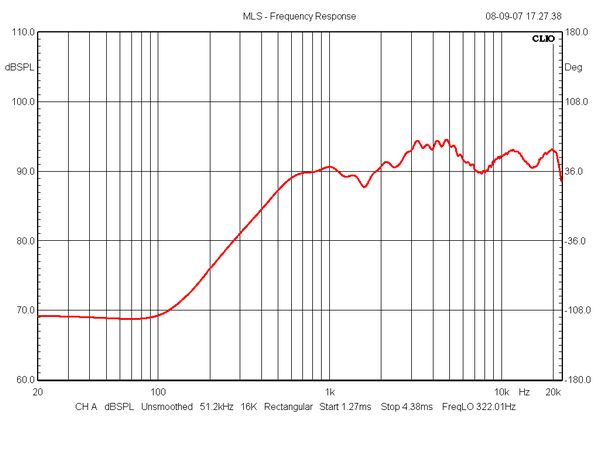
Response of XT25TG from non-flush
mounting. Quite a difference. Below the two readings on
the same graph:
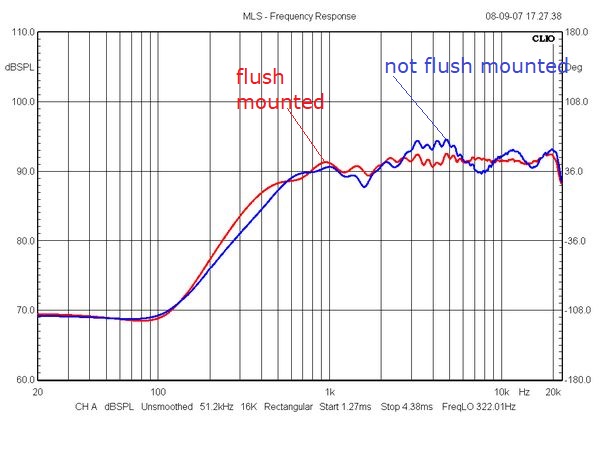
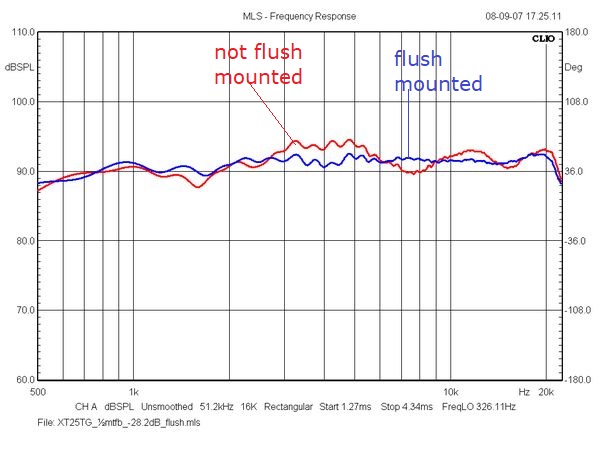
Above the impact of flush
mounting a tweeter.
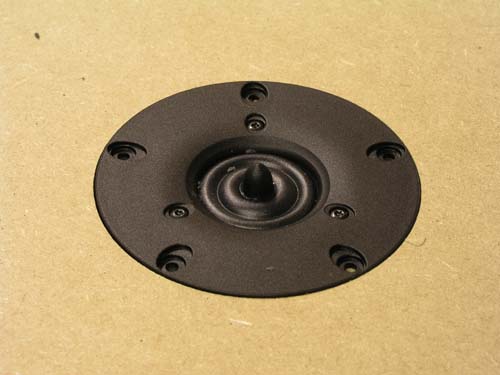
This is what it should look like. Rebate a
little deeper than the height of faceplate, add some
rubber strips and screw the tweeter in place until the
faceplate is flush with the baffle. No more, no less. Not
0.5 mm below and not 0.5 mm above. Flush!!
Make sure the rebate has the exact
diameter of the faceplate + 0.1 mm. If wider you can use
tape to cover the ditch. Even a narrow ditch will cause
response irregularities.
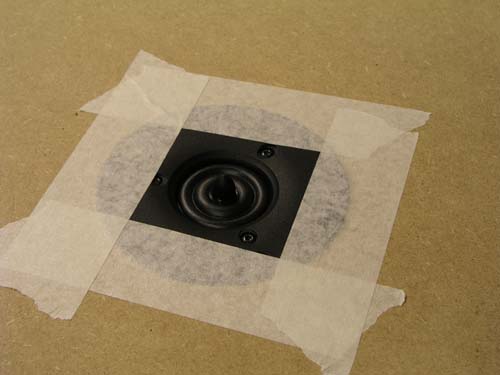
Use thin painter's tape like seen above.
|


















